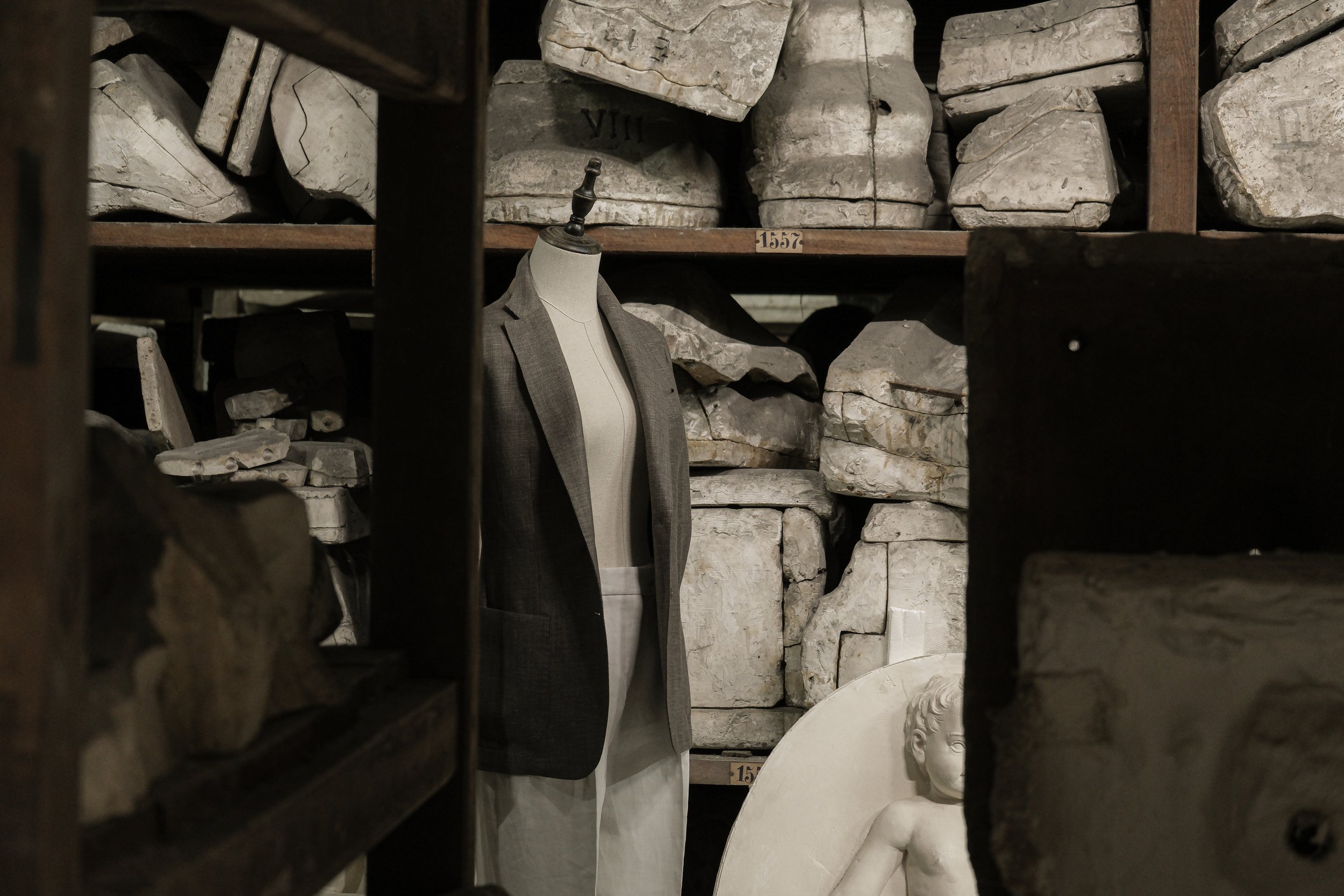
The Atelier de Moulage
(the plastercast workshop)
“that”, says our guide, pointing towards a boulder on the floor near our feet, a big, cragged lump, like something just detached from a mountainside, “is michelangelo’s head of david”.
“and that”, pointing this time to the top of a storage rack, at a brute slab spidered in old lettering that makes an instant connection in her memory, “is for the gates of babylon, from the pergamon”.
This is the atelier de moulage; an inventory of secret wonder.
let’s go back.
in the 19th century there was a mad idea about: that historical culture was important. that it should be shared, inventoried, made safe against time.
so the habit grew of The major museums of europe sharing plastercasts of their trophy pieces; a michelangelo here, a donatello there; babylonian reliefs; grecian heroes; medieval madonnas and alterpieces; roman heads, saints’ heads; egyptian heads; heads from everywhere; lions, cats, dogs, the odd dinosaur; escutcheons, heraldries; capitals and curlicues. every instance of art in three dimensions.
giddily, greedily, the recipient museums would make moulds of their own. there is no stronger greed than the desire to amass culture - and for new nations in particular. and among those was belgium, young and excitable among the nations of europe. it made thousands upon thousands of moulds, hoarding them into a wing of the royal museum in brussels; a storehouse of culture in vitro. to walk among the moulds is to walk between wombs. pour plaster in, wait. and a being will come out.

Today the atelier still makes plastercasts in the same manner as ever. When Sud visited, a large order had just left for castle howard in england. but it takes time. this is delicate, deliberate work - and the moulds themselves (as artifacts in their own right) need careful handling. an order can take up to two years.
We chose the atelier to photograph sud’s first capsule; our foundational jacket and trouser styles, crafted in crisp, desaturated fabrics that settled perfectly into the atelier’s materiel; plaster, clay, dust, old pigment. The atelier not only made a curious backcloth to the garments, but shared with sud the quality of something classical but freshly derived. a new life out of old moulds.
our deepest thanks go to Léo and nele at the museum for making our visit possible (and so enjoyable).
sud






